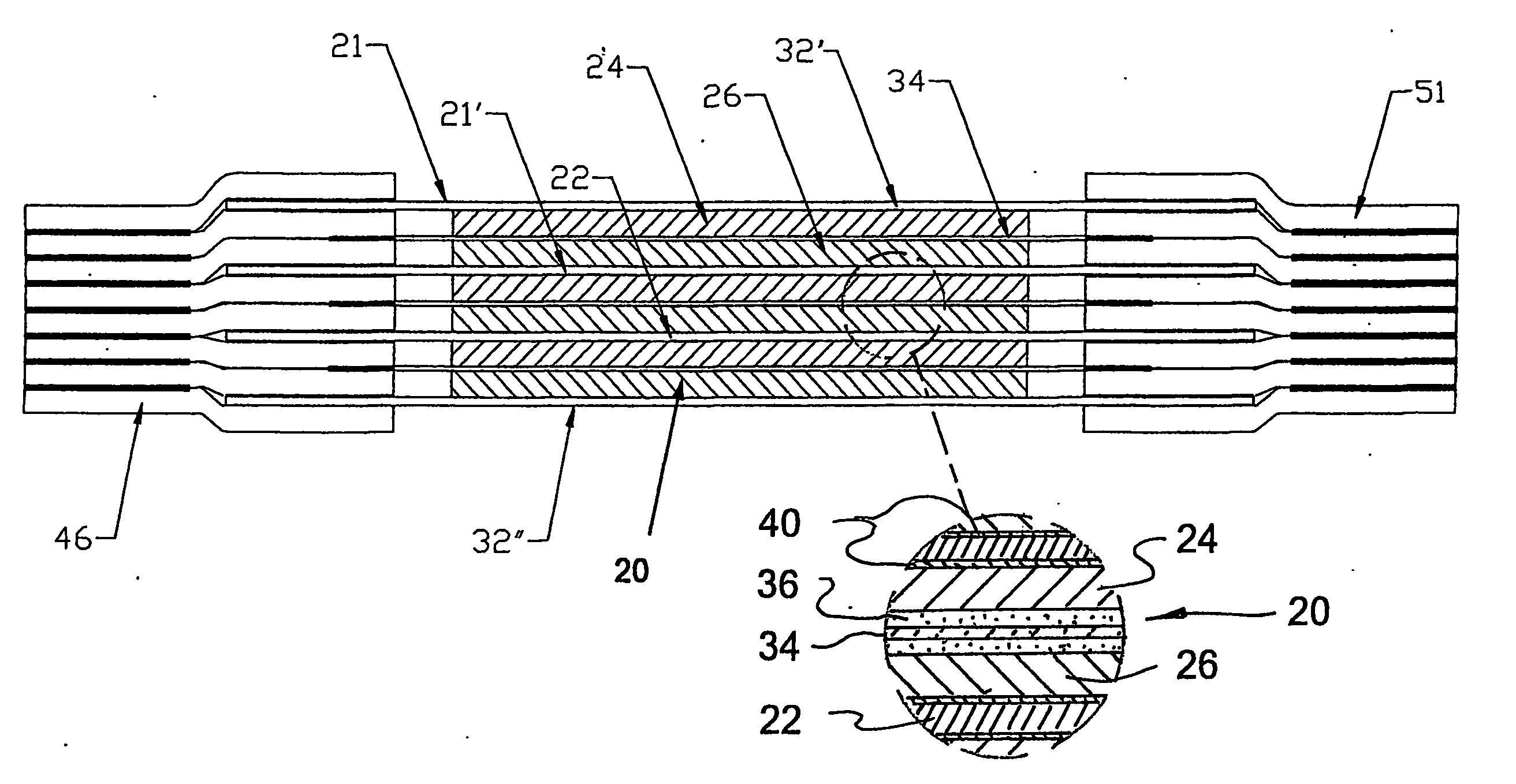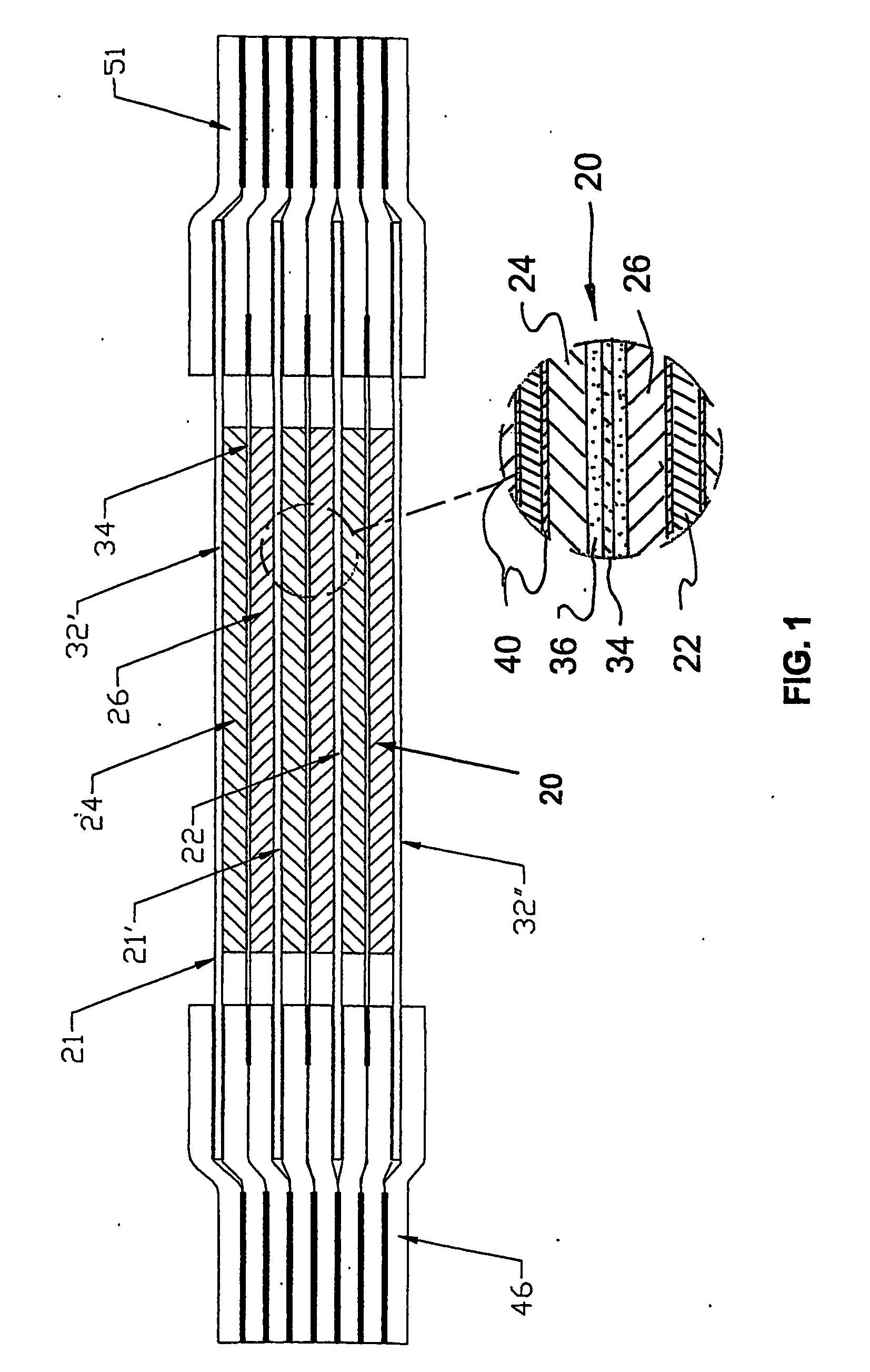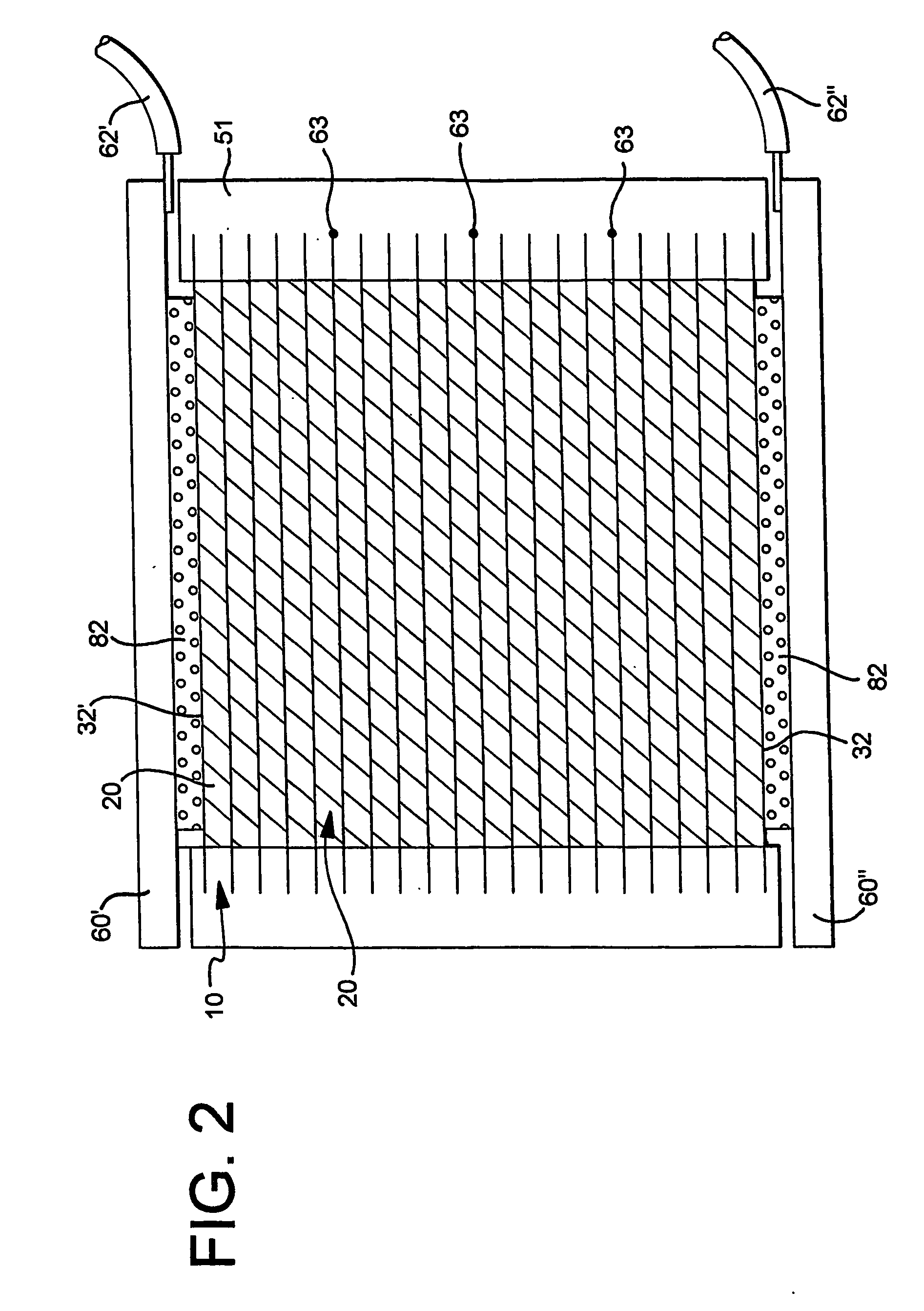Rechargeable bipolar high power electrochemical device with reduced monitoring requirement
a high-power electrochemical and bipolar technology, applied in the field of electrochemical devices, can solve the problems of poor power supply and transient power loss in the supplied main power supply, adverse effects of electronic equipment, and damage to electronic equipment, and achieve the effects of low cost, high stability, and high safety
- Summary
- Abstract
- Description
- Claims
- Application Information
AI Technical Summary
Benefits of technology
Problems solved by technology
Method used
Image
Examples
example 1
[0037]FIG. 3 shows the capacity output of EXAMPLE 1, a five-cell bipolar battery under a compression corresponding to a 100 kg load, as a function of cycle number when the battery device was charged and discharged at the 1C rate of 190 mA. The initial battery capacity was close to the nominal cathode capacity of 190 mAh, confirming that batteries according to EXAMPLE 1 are cathode-limited. After 1000 complete charge / discharge cycles, the battery capacity was still 85% of nominal capacity, showing the excellent cycle stability of a five-cell bipolar battery according to the present invention.
[0038] A second bipolar battery according to EXAMPLE 1 was tested for its high power performance. It was fully charged at the 1C rate and then discharged at the 20 C rate, corresponding to 0.04 A / cm2. FIG. 4 shows the 20 C discharge curve of EXAMPLE 1 in comparison with other EXAMPLES of the present invention. The battery run time of EXAMPLE 1 was 46 s when the cut-off voltage was set to 7.5 V, ...
example 2
[0041]FIG. 3 shows the capacity output of EXAMPLE 2, a ten-cell bipolar battery under a compression corresponding to a 100 kg load, as a function of cycle number when the battery device was charged and discharged at the 1 C rate of 190 mA. The initial battery capacity was close to the nominal cathode capacity of 190 mAh, confirming that batteries according to EXAMPLE 2 are cathode-limited. While the cycle stability was very comparable to EXAMPLE 1 over the first few hundred cycles the capacity output of EXAMPLE 2 seriously deteriorated after about 400 cycles, showing that ten cells in series, without monitoring the voltage of smaller subgroups, do not yield adequate battery stability when design parameters of EXAMPLE 2 were employed.
[0042] A second bipolar battery according to EXAMPLE 2 was tested for its high power performance. It was fully charged at the 1 C rate and then discharged at the 20 C rate, corresponding to 0.04 A / cm2. FIG. 4 shows the 20 C discharge curve of EXAMPLE 2 ...
example 3
[0044]FIG. 3 shows the capacity output of EXAMPLE 3, a five-cell bipolar battery under a compression corresponding to a 100 kg load, as a function of cycle number when the battery device was charged and discharged at the 1C rate of 190 mA. Note that the nominal C-rate of EXAMPLE 3 was based on cathode capacity, in the same way as for EXAMPLES 1 and 2. The initial capacity of EXAMPLE 3 was significantly lower than for EXAMPLES 1 and 2. It was close to the nominal anode capacity of 165 mAh, confirming that batteries according to EXAMPLE 3 are anode-limited. After 1000 complete charge / discharge cycles, the battery capacity was still 78% of the initial one, showing the excellent cycle stability of a five-cell bipolar battery according to the present invention.
[0045] A second bipolar battery according to EXAMPLE 3 was tested for its high power performance. It was fully charged at the 1C rate and then discharged at the 20 C rate, corresponding to 0.04 A / cm2. FIG. 4 shows the 20 C dischar...
PUM
| Property | Measurement | Unit |
|---|---|---|
| porosity | aaaaa | aaaaa |
| porosity | aaaaa | aaaaa |
| conductivity | aaaaa | aaaaa |
Abstract
Description
Claims
Application Information
 Login to View More
Login to View More - R&D
- Intellectual Property
- Life Sciences
- Materials
- Tech Scout
- Unparalleled Data Quality
- Higher Quality Content
- 60% Fewer Hallucinations
Browse by: Latest US Patents, China's latest patents, Technical Efficacy Thesaurus, Application Domain, Technology Topic, Popular Technical Reports.
© 2025 PatSnap. All rights reserved.Legal|Privacy policy|Modern Slavery Act Transparency Statement|Sitemap|About US| Contact US: help@patsnap.com



